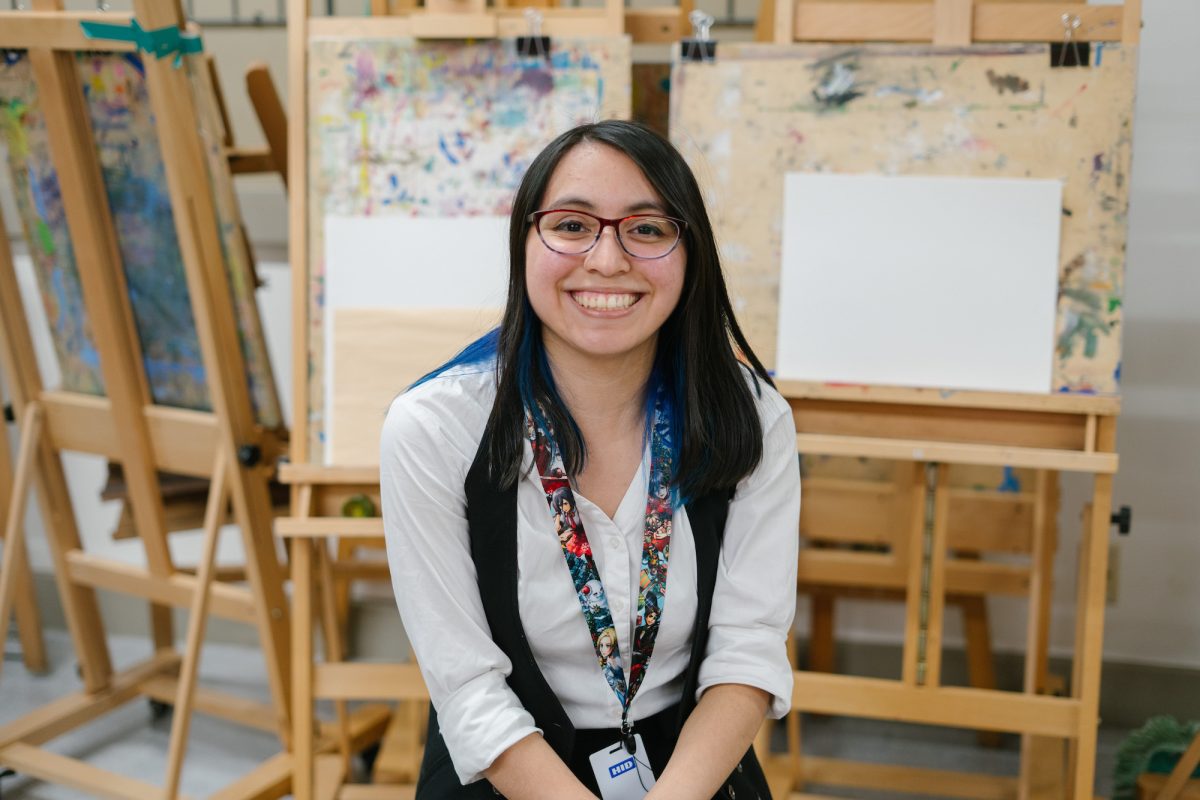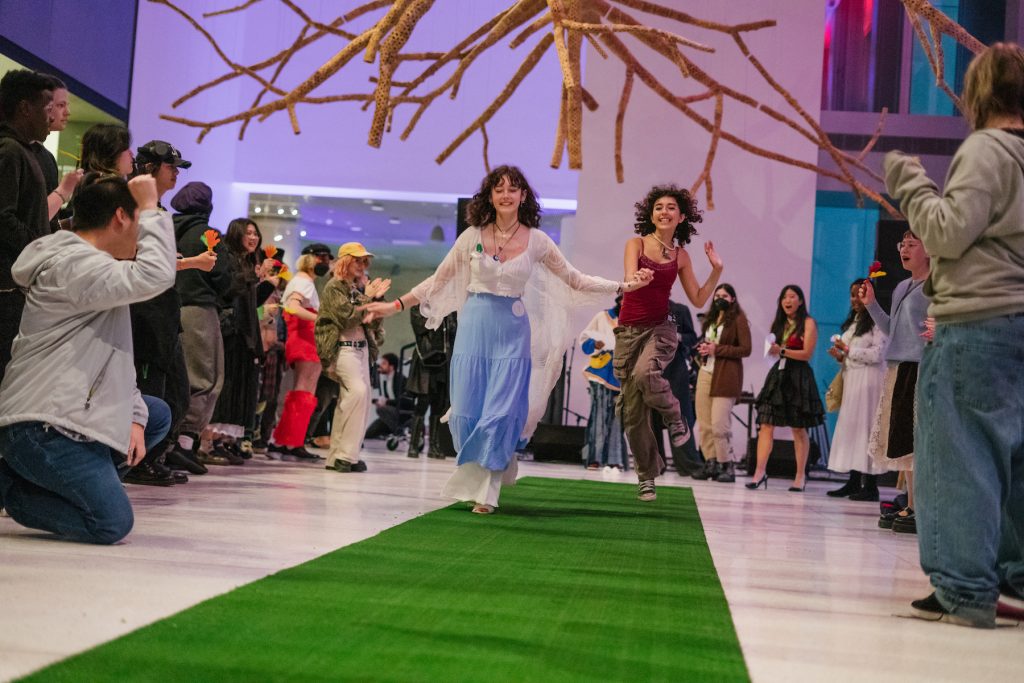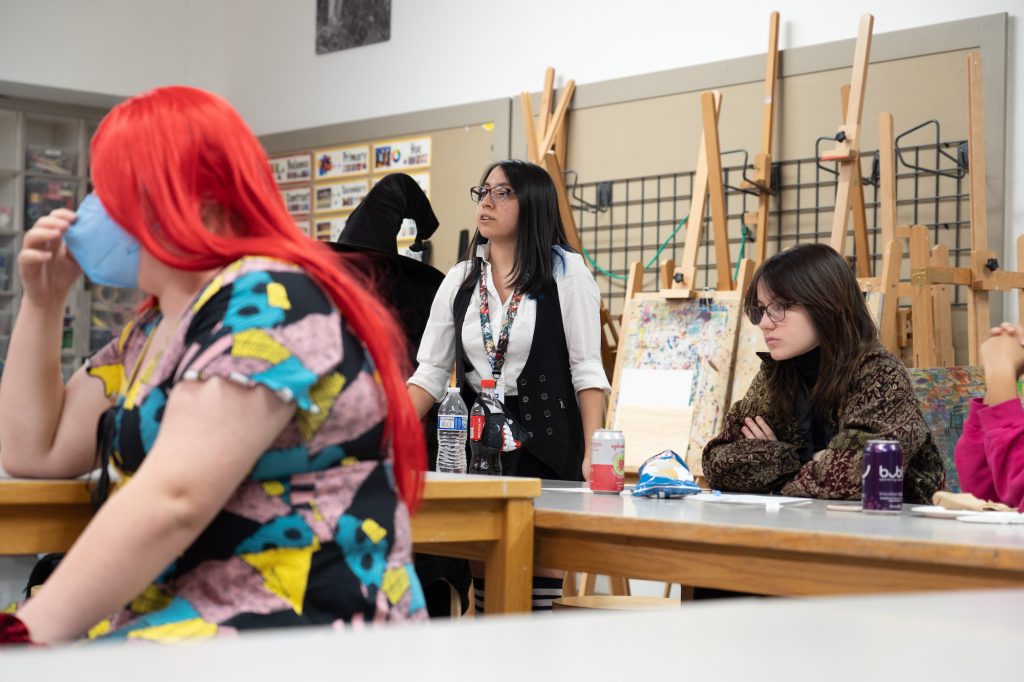Teens Look Forward: Emerging Arts Leader Karla Pastrana Reflects

“What do you want to be when you grow up?”
I have been asked this question since I was a child. Now, as a junior at the University of Washington Tacoma, that question has evolved:
“What do you want to do after college?”
No matter how it’s phrased, the question still sends a wave of nerves down my body. Growing up, there were high expectations for me to excel. As the only US citizen in my family, I wanted to show my parents that their sacrifices were worth something; as a student with a learning disability, I have struggled to catch up to my classmates; as an early-career professional, I constantly face uncertainty about what success looks like for me. Whenever I am asked who I want to be, I am reminded of my childhood fears—of the dark, the unknown, and what the future holds for all of us.
I joined SAM’s Teen Arts Group (TAG) in 2020 as a senior in high school, and just recently wrapped up my second year as an intern helping to oversee the same program. As part of SAM’s education team, my goal was to provide youths with the same community experiences and leadership opportunities I received when I was a TAG member.
I joined TAG at the start of the COVID-19 pandemic. During that time, I was beyond scared about my future. I knew I wanted to go to college and get a degree in writing, but I was uncertain about where to take that experience afterward. While serving as a TAG leader, I learned that there were many opportunities out there which combined my passions for art, writing, and creating inclusive community programs.
After graduating high school, I decided I was interested in learning more about museum education. More specifically, I wanted to play an active role in creating artistic and educational opportunities for young students of color, populations who—like myself—have been historically excluded from art museums as a result of income inequality and systemic racism. Throughout 2020, TAG meetings were often spent discussing this issue because many of us had personally experienced exclusivity from art institutions. We made it our goal to prioritize inclusion across all our events, encouraging BIPOC teens from all social backgrounds to showcase their art and feel welcome at the museum. This led to On The Verge, a teens-only exhibition featuring artists whose perspectives and identities are shaped by race, gender, ethnicity, and social background. This exhibit was free, accessible, and open to the public—all of which helped artists, and my TAG colleagues, feel seen and valued at the museum.

As I have grown into my role as the Teen and Family Programs Intern, I have learned so much about how TAG is planned and executed behind the scenes. On the same day I am writing this reflection, I am also helping develop TAG’s yearly and weekly schedules, lead discussions and presentations with TAG participants, create content for @SAMTeens on Instagram, plan icebreakers and team-building activities, coordinate guest speakers, and provide mentorship opportunities for this year’s cohort of teens.
TAG is intended to help teens explore their passions and build leadership skills that will benefit them long after their time at SAM. I know how confusing and stressful it can be to navigate life after high school, and know how vital it is for teens to have a safe place to learn, ask questions, and make mistakes. As a TAG mentor, I’ve encouraged teens to anticipate problems, discuss questions, and think deeply about their short- and long-term goals—all of which are skills I have found helpful in my work as an Emerging Arts Leader.

My internship experience at SAM has expanded my view of what art and museums can be. By collaboratively planning projects and facilitating group discussions, I came to realize how great diversity leads to greater inclusion in museums. The teens I work with all come from different backgrounds, use different art mediums, and have different styles of leadership that shape their worldview.
I still have much to learn about running a community program like TAG, but my experience so far has shown me that I am on the right path in achieving my goals and overcoming my uncertainties about the future. Now when I get asked what I want to do when I grow up, I can confidently say: “I’d like to work for an amazing organization like SAM, making sure art is accessible and inclusive to all.”
– Karla Pastrana, SAM Emerging Arts Leader in Teen Programs
Photos: Chloe Collyer.